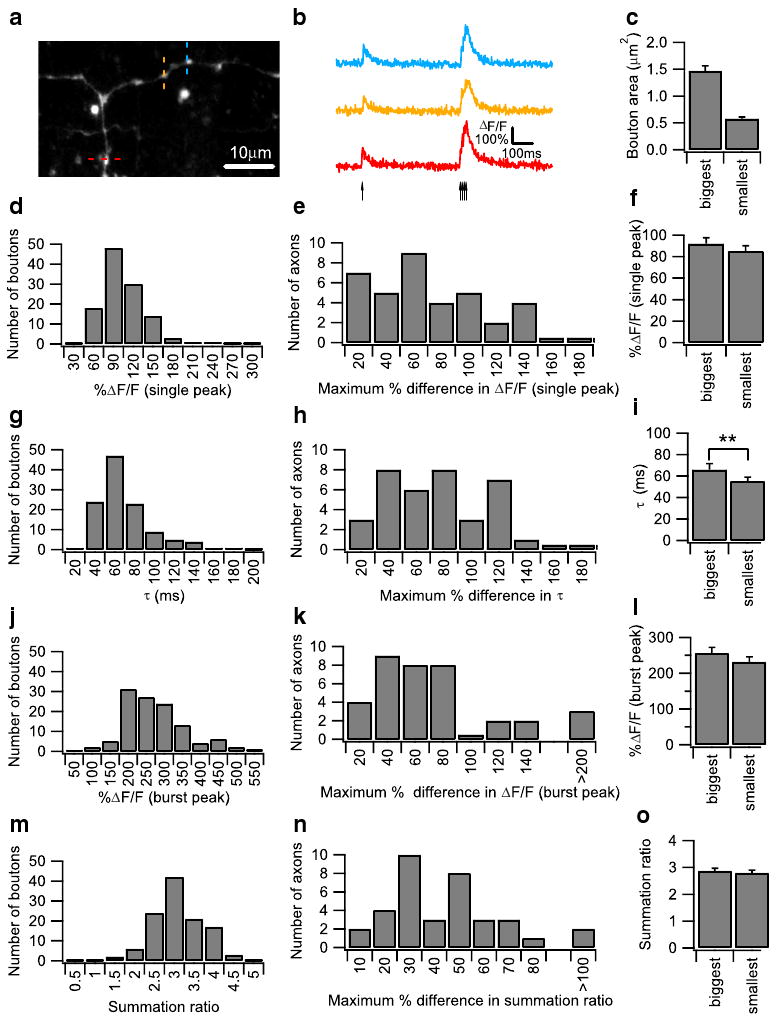Fig. 1.

Heterogeneity of action potential (AP)-evoked Ca2+ transients in granule cell axonal boutons. a A Z-projection confocal stack image showing a dye-loaded parallel fiber (PF). Individual boutons appear as bead-like varicosities along axons. Ca2+ imaging was performed sequentially on three individual boutons located on the ascending axon or the PF as indicated by the red, yellow, and blue dotted lines. This confocal stack image was projected by summing pixel intensities. b Representative AP-evoked Ca2+ transients measured from three neighboring boutons on the same PF shown in (a) were plotted as ΔF/F over time. Ca2+ transients were evoked by a protocol consisting of a single AP followed 500 ms later by a burst of four pulses at 100 Hz. The arrows indicate the onset of the individual AP. The averaged traces from ten trials are shown. c Bar graph showing average bouton areas of the biggest and smallest boutons on a single PF axon, measured from 34 axons. Bouton areas were determined from the Z-projection of confocal images of the dye-filled bouton obtained after calcium imaging. Histograms of the single AP-evoked Ca2+ peak amplitude (d) and decay time constant (g), as well as the burst AP-evoked peak amplitude (j) and summation ratio (m) from 115 granule cell boutons, are presented. The summation ratio was calculated as the peak Ca2+ transient evoked by the burst AP divided by the peak Ca2+ transient evoked by the single AP. Histograms of the maximum percentage difference in single AP-evoked Ca2+ response amplitude (e) and decay time constant (h), as well as the burst AP-evoked Ca2+ response amplitude (k) and summation ratio (n) from three boutons measured on the same axon from 36 axons, are presented. Comparison of various parameters between the biggest and smallest boutons on the same axon. Axons were only included if the biggest bouton was at least 60% larger in volume compared with the smallest bouton, and 34 axons were compared in total. Bar graphs showing the single AP-evoked Ca2+ response amplitude (f) and decay time constant (i), as well as the burst AP-evoked Ca2+ response amplitude (l) and summation ratio (o), are shown. Error bars indicate the SEM in this and all subsequent figures
